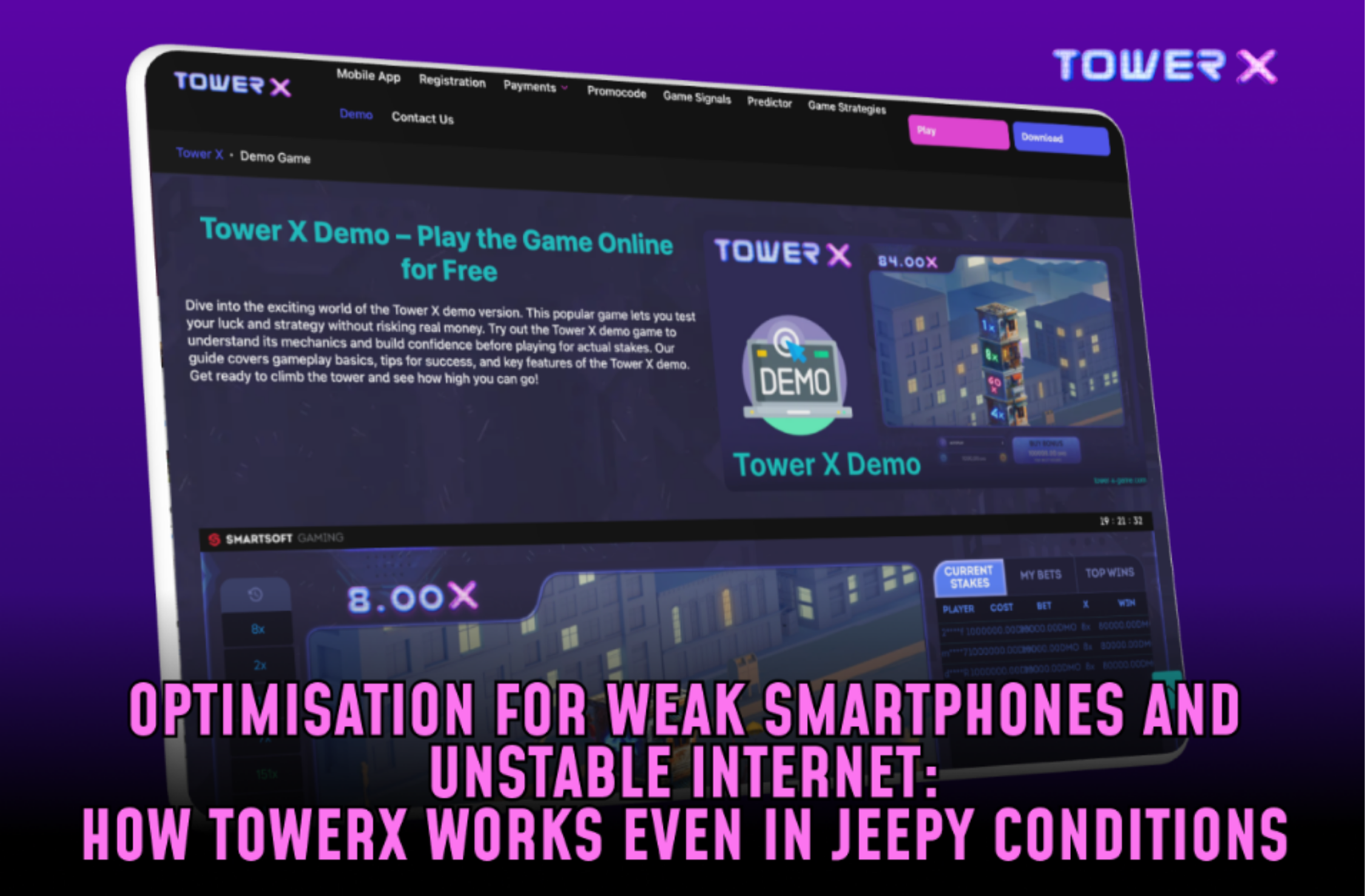Optimisation for Weak Smartphones and Unstable Internet: How TowerX Works Even in Jeepy Conditions

Players in India often face two objective limitations: affordable entry-level smartphones and unstable mobile internet — especially outside of major cities. Although median mobile speeds in the country are increasing thanks to the development of 4G/5G, the differences between urban and rural areas are still noticeable, and power outages and communication channel drops remain a reality. It is in such jeepy conditions (when the network is shaky, the ping is jumping, and the device is weak) that TowerXGame shows how a gambling game can remain light, fast, and understandable.
What is TowerX and Why is It Compatible with Simpler Hardware?
TowerX is a dynamic game with multipliers and short rounds. Its essence is to climb floors and make quick decisions while keeping control over the risk. The format is built around instant feedback: the player sees progress and odds, and each click feels alive. This design saves resources in itself — there are no heavy open worlds, long downloads or gigabytes of resources — which is especially important on smartphones with limited memory and modest graphics accelerators. At the same time, the game relies on crash/multiplier mechanics familiar to the user, keeping the interface and pace understandable.
Direction of Work: How TowerX Remains Light on Weak Smartphones
Adaptive Graphics without Guzzling
The visual part of the game is organised so as not to strain the GPU and battery. This is achieved through reasonable texture sizes, their compression for mobile formats (e.g. ASTC/ETC2), neat shaders, and minimalistic animations. The quality per device approach allows the game to draw exactly as much as the screen of a particular smartphone can display, without unnecessary RAM consumption and heating.
Dynamic Sharpness Scaling
If the hardware cannot handle the peak load, the render resolution or detail is temporarily reduced to maintain frame rate and responsiveness. This is almost imperceptible on small screens, but the smoothness is immediately noticeable: touches are recorded more accurately, and scrolling and animations do not fall apart.
Micro-Downloads and Lazy Loading
Instead of a monolithic scene, the game uses small bundles of assets: first, everything needed to start the round, and then more as needed. This type of streaming reduces start-up wait times and saves memory, which is critical for devices with 2-3 GB of RAM.
Economical Audio Stack
Short sounds, compressed tracks, and limited simultaneous channels — so as not to drown the CPU and inflate the APK/cache. In the heat of the moment, accurate ticking for an event is more important than a voluminous soundtrack in the background.
The result: even on the most budget-friendly smartphone, Tower X Game remains light on its feet — it opens quickly, does not require memory to be cleared before launch, and does not drain the battery after a couple of rounds.
Working in Jeepy Networks: Resistance to Disconnections and Traffic Savings
Network Protocol without Freezes
For such games, it is not the absolute reliability of each byte delivery that is important, but low latency and predictability. Therefore, scenarios where resending lost packets blocks the entire stream (head-of-line effect) are avoided. Architecturally, this is solved through lightweight transport logic and accurate reliability at the application level. The result is fewer freezes with single packet losses.
Automatic Session Recovery
In the event of a brief connection loss, the client does not panic: it reloads, “stitches” the state, and returns the player to where they left off. Such resuming is important in the Indian context, with periodic signal drops and overloaded cells, especially far from metropolitan areas.
Caching and Offline Readiness of the Interface
Even if the game runs in a browser, the skeleton of the interface, fonts, icons, and critical scripts can be stored locally. Service workers and Cache API allow the shell to be displayed instantly and then synchronise data in the background when the network comes back to life. This reduces white screens and increases subjective speed.
Background Synchronisation and Smart Retries
Actions that are not critical to milliseconds (such as loading history) are postponed until a stable connection is established. Retries are made incrementally, without aggressive bursts of requests, so as not to waste traffic unnecessarily.
User Experience: What the Player Will See and Why It Works
Instead of heavy effects, TowerX focuses on clear typography, large controls, and clean round logic. Continuity of the process is more important than wow graphics: the player does not need a consistently high FPS for enjoyment — they need a stable response and unambiguous visual feedback. In addition, the short game cycle reduces the risk of dropping out of context during network glitches: if the connection is lost at the end of a round, the next one starts without a noticeable pause.
What helps TowerX on low-end smartphones:
- Compressed textures and minimalistic animations do not overload the video accelerator, so the game remains smooth even when the device temperature rises.
- Dynamic clarity: the game maintains touch responsiveness and interface readability even when the render resolution is temporarily reduced.
- Reasonable memory consumption due to asset streaming: the client does not choke when switching screens and does not “crash” due to insufficient RAM.
- Modest amount of data downloaded at the start: the round starts quickly, without long warm-ups, which is especially nice on a mobile network.
Conclusion
TowerX Game shows how competent technical solutions and sober design overcome the realities of the field: budget smartphones, unstable signal, different usage scenarios in India — from the metro of a metropolis to suburban and rural areas. Adaptive graphics, lightweight assets, dynamic clarity, caching, background synchronisation, and non-blocking network logic allow the game to remain fast and user-friendly, even when the internet is unstable. As a result, players get what really matters in a gambling game: a clear interface, quick decisions, and a sense of continuity throughout the round — without freezes, endless downloads, or unnecessary technical concerns.

